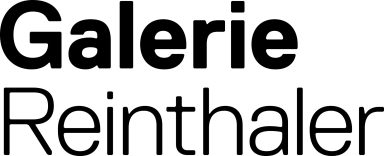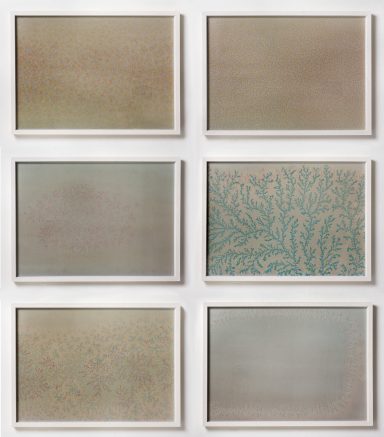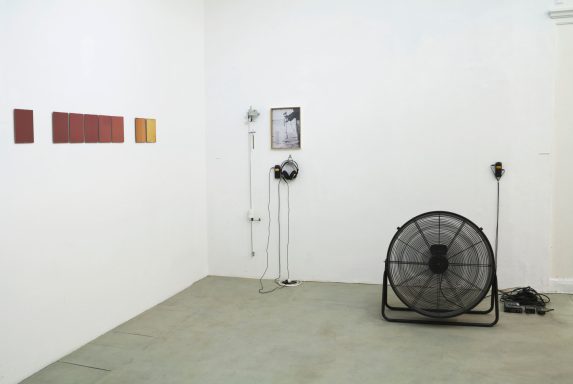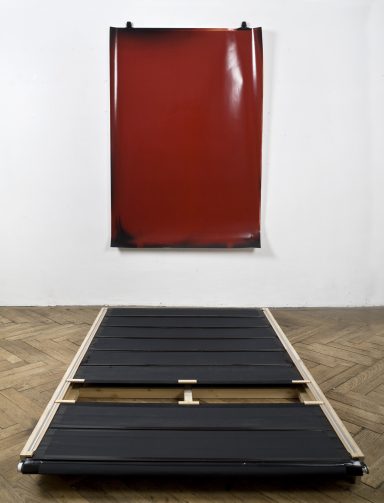20. Jänner - 27. Februar 2016
Ulrike Königshofer. Dinge, die andere Dinge sind
Ende Dezember 2015 präsentierte Ulrike Königshofer im Künstlerhaus Graz ihre Solo-Ausstellung "Dinge, die andere Dinge sind", Anfang 2016 wandern große Teile davon weiter in die Galerie Reinthaler. Die Schau behandelt die Aufnahme und Registrierung von Informationen über die Welt. Den Ursprung fand diese Auseinandersetzung in der sinnlichen Wahrnehmung, die als physischer Prozess im Körper stattfindet und doch ein Wissen über das Außerhalb erzeugt. Wie nahe kann dieses wahrgenommene Bild an die Welt selbst herankommen? Die Arbeiten thematisieren diese Verbindung zwischen einem Gegenstand und seiner Abbildbarkeit.
Was macht einen physikalischen Prozess, die Reaktion eines Stoffes auf einen anderen, zum Abbild des einen vom anderen? Wie kann es etwas über einen anderen Gegenstand sagen, ohne selbst dieser Gegenstand zu sein? Dieser Themenkomplex wird in der Ausstellung über den Weg technischer Medien beschritten, das fotografische Bild dient als Prototyp für ein Verständnis von Abbildhaftigkeit.
Gezeigt wird etwa die Serie „80°Celsius“, bestehend aus Fotografien, die keine Abbilder sind. Sie entstanden durch die Einwirkung von Temperatur auf den Negativstreifen, der im Anschluss ganz ohne Kamera kurz dem Licht ausgesetzt wurde. Das Fotomaterial ist hier nicht Abbild von etwas anderem, es ist nicht mehr Medium, sondern rein physikalisch anwesender Körper.
Eine weitere Arbeit, "Sechs Sekunden Mondlicht", fängt Mondschein auf Fotopapier ein. Es sollte weder ein Bild vom Mond entstehen, noch ein Schattenbildnis von den Dingen, die er beleuchtet (wie etwa bei einem Fotogramm). Die Aufnahmen wurden an jedem Tag eines Mondzyklus gemacht, indem Farb-Fotopapier vom Mondschein belichtet und danach entwickelt wurde. Die Leerstellen an der Wand markieren bewölkte Tage ohne Mond.
Gerade die körperliche Verbindung mit dem abgebildeten Objekt verleiht dem Medium seine Authentizität. Paradoxerweise verschwindet in der Betrachtung diese Materialität, hier wird das Medium nur als Vermittler wahrgenommen eines anderen Körpers und nicht als etwas, das selbst Körper ist - ähnlich einem wissenschaftlichen Messgerät, als stünde es an einem neutralen Standpunkt außerhalb der Welt. Das Medium gilt dann als ideal, wenn es selbst eigenschaftslos ist und eine reine Wiedergabe der Eigenschaften des abgebildeten Objekts. Medien werden üblicherweise als reine Übermittler von etwas wahrgenommen und nicht auch selbst als Körper.
Die Arbeiten der Ausstellung heben das Medium aus seiner klassischen Rolle, sodass es nicht mehr als unstofflicher Informationsträger erscheint, sondern einen eigenen Körper bekommt. Die Betonung der Materialität des Medialen ermöglicht erst den Blick auf die Aufnahme als stofflichen Gegenstand, der nicht auf etwas anderes verweist, sondern nur hier und jetzt und er selbst ist.
***
At the end of December, Ulrike Königshofer presented her solo exhibition, “Things, Which Are Other Things“ ("Dinge, die andere Dinge sind"), in the Künstlerhaus Graz. At the beginning of 2016, some parts of that show will be presented in the Galerie Reinthaler. The exhibition examines the integration and recording of information about the world. The origin of this engagement is found in the sensuous perception, which takes place in the body as a physical process, and still it produces knowledge about the outside world. How close can this perceived image be to the world itself as it is? The works discuss this connection between an object and its capacity of being represented.
What makes a physical process, such as the reaction of a substance with another, into the reflection of the one onto the other? How can something talk about an object, without itself being that very object? This set of issues are addressed in the exhibition by threading a new path of technical media, of the photographic image as prototype for understanding the representational character of image – making.
A part of the series ‘80°Celsius’ will be shown, consisting of photographs which are non-representational. They emerged from the exposure to temperature of the negative stripes of film, which were briefly exposed to light without an actual camera. The photographic material is here not a representation of something else; it is not merely a medium any longer, but in fact a purely physical, existing body.
A further work, ‘Six Seconds of Moonlight’, captures the moonlight on photographic paper. This creates neither an image of the moon, nor a shadows contour of the objects which are illuminated (similarly to a photogram). The pictures were made on each day of the lunar phases, in which coloured photographic paper was exposed to the moonlight and then developed. The vacant spaces on the wall mark the cloudy days or those without a visible moon.
It is precisely the bodily connection with the represented object which lends its authenticity to the medium. Paradoxically, the materiality vanishes in this treatment, and the medium is perceived only as an intermediary to another body, and not as a body in itself – similarly to a scientific measurement device, which would stand in a neutral place outside of the world. The medium is considered as an ideal when it is without any characteristics and as a pure reproduction of the characteristics of the represented object. Media are usually perceived as mere intermediaries for something, and not as bodies in themselves.
The works in the exhibition elevate the medium from its role, so that it does not appear as an immaterial carrier of information, but it receives a body of its own. The emphasis on the materiality of the media enables a view of the picture as a material object, which is not relegated to something else, but which, in the here and the now, is itself.
© 2025. Alle Rechte vorbehalten.
Wir benötigen Ihre Zustimmung zum Laden der Übersetzungen
Wir nutzen einen Drittanbieter-Service, um den Inhalt der Website zu übersetzen, der möglicherweise Daten über Ihre Aktivitäten sammelt. Bitte überprüfen Sie die Details in der Datenschutzerklärung und akzeptieren Sie den Dienst, um die Übersetzungen zu sehen.







